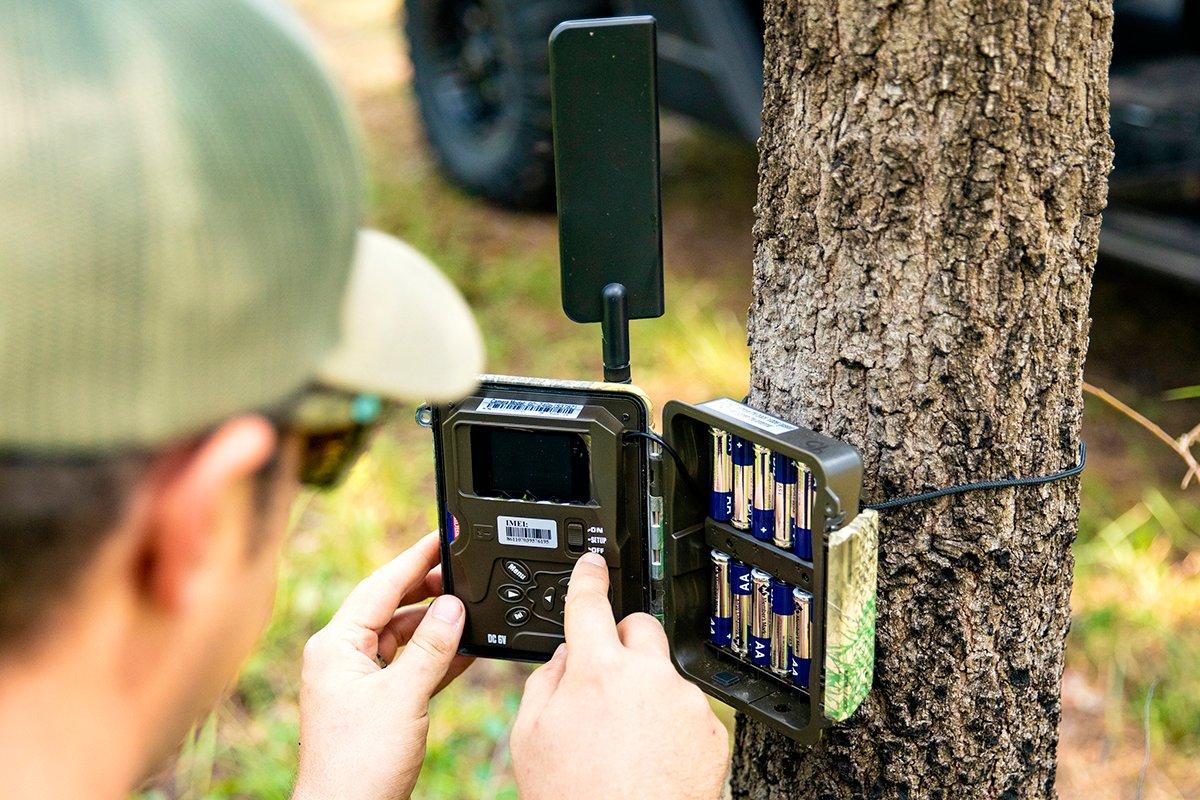Try these tricks to start tracking buck movement right up to opening day of bow season
I run several cams year-round, but July 4 is when I start my buck recon in earnest for the new season. Velvet antlers are growing full bore. When you get an image of a buck with shooter potential, you'll know it and can start tracking his movements for the next few months. Here are four spots to set your cameras.
1. Mineral Licks
For years on the Virginia farms I hunt, friends and I would start refreshing mineral sites in early July, set a camera at each lick and get thousands of images of deer during the next eight weeks. Although we might not have captured every buck that summered on the farms, I'll bet we got pictures of 80 percent of them. Every year, we'd get images of three or four top-end bucks at each property. Many of those big deer hung around within 300 acres or so of the licks into the early October bow season.
If your state allows it, dumping minerals and setting a camera 10 to 12 feet from each lick is the best way to inventory the bucks on a property and monitor racks as they grow to full potential in August. You can start to formulate a strategy to bowhunt the biggest bucks in early fall, and some of the deer will hang in the vicinity deeper into the season
A couple of years ago, the Virginia Department of Wildlife Resources banned the use of minerals to attract deer. Bummer. Even though we can't refresh them, we still hang cameras at old licks where we got the most buck pictures. The local deer have been conditioned through the years to come to the licks in summer, and we still get some images there — not nearly as many as we once did, but some, and often a mature buck.
2. Food Plot Funnels
Next week at one property, we'll set two cameras at two small clover plots hidden in the woods. We'll set three more cams at larger plots but not aimed into the clover. Rather, we'll place those cams 20 to 30 yards back in the green thickets that rim the edges, near deer trails and little cuts and ditches. Thick, secluded pockets and bottlenecks are where you'll likely get images of a big velvet buck working the plot.
(Don't Miss: New Advice for Summer Food Plots)
3. Creek Crossings
I urge you to put a camera on every narrow, muddy creek crossing within a quarter-mile of a clover plot or crop field at your hunting area. If there's a waterhole or beaver pond nearby, hang a cam there, too. As summer deepens, mature bucks hang out in secluded cover near water, where it's cool and shady.
4. Fence Gap
At one farm I hunt, a row of trees and brush about 50 yards wide splits two large cornfields (the fields might be soybeans or alfalfa where you hunt). Within that shelterbelt is a flat, grassy gap where the farmer drives his tractor between the fields. On an old gate post in the gap is one of my favorite spots to run a camera while the corn is still tall and uncut.
Through the years, a camera on the gate post has captured many mature bucks during summer movements, a few of which we killed a couple of months later during the early archery season. If you can think of a similar gap where you hunt, run out there and set a camera.
(Don't Miss: 3 Bow Stand Mistakes to Fix Before Deer Season)








